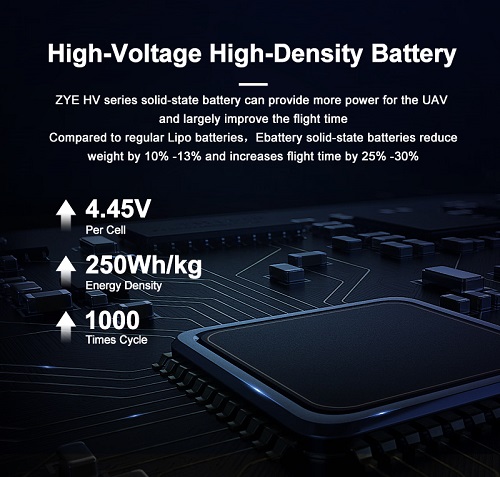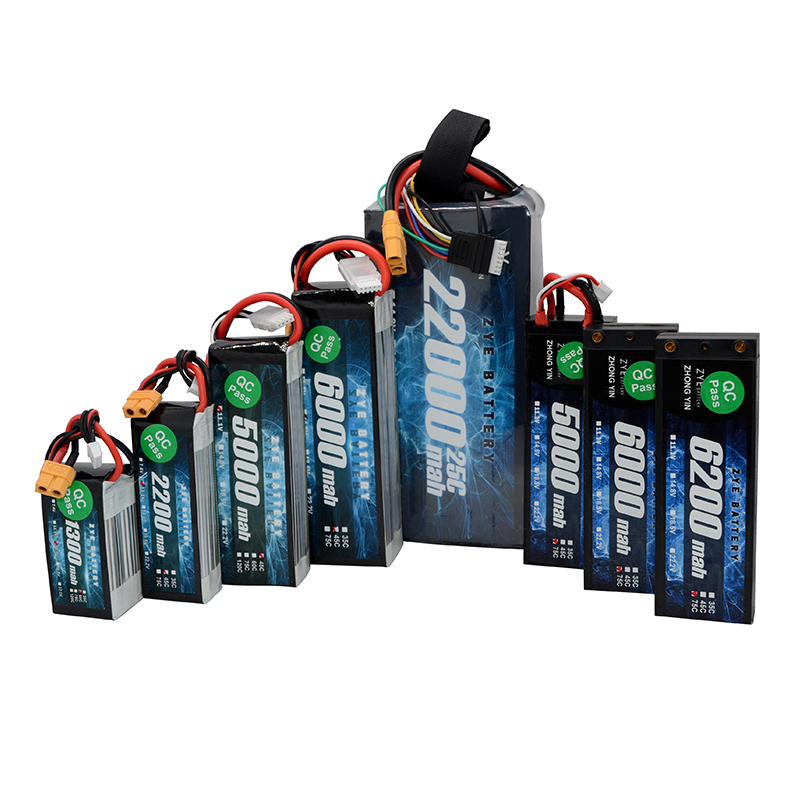Understanding Drone Battery Discharge Rates
2025-05-23
When it comes to powering your drone, understanding battery discharge rates is crucial for optimal performance and safety. Whether you're a hobbyist or a professional drone pilot, knowing how to choose the right battery with the appropriate discharge rate can significantly impact your flight experience. In this comprehensive guide, we'll delve into the intricacies of drone battery discharge rates, explore safe discharge rates, and help you make an informed decision between high and low discharge batteries.
What is a safe discharge rate for drone batteries?
The safe discharge rate for drone batteries plays a crucial role in maintaining both the performance and longevity of your equipment. It refers to the maximum current that can be drawn from the battery without causing any damage, degrading its capacity, or shortening its lifespan. Typically, this rate ranges between 1C and 25C, with variations depending on the battery's design and chemistry.
Several factors influence the determination of a safe discharge rate for drone batteries. First, the battery's chemistry (such as lithium polymer or lithium-ion) impacts its ability to handle high discharge rates. Second, the construction of the battery cells, including the materials used and their configuration, can either enhance or limit the discharge capabilities. Third, effective thermal management is essential, as heat buildup during high discharge can harm the battery. Finally, the overall capacity and voltage of the battery also affect its discharge tolerance.
To ensure optimal performance and safety, it's critical to follow the manufacturer’s guidelines and specifications. Exceeding the recommended discharge rate can lead to problems such as overheating, reduced efficiency, and potential hazards, including the risk of fire or swelling. Always check the battery's recommended limits and avoid pushing it beyond those safe thresholds to protect both the battery and your drone.
C-rating explained: How discharge rates impact performance
The C-rating is a crucial metric when discussing drone battery discharge rates. It represents the maximum continuous discharge rate of a battery relative to its capacity. Understanding C-ratings is key to selecting the right battery for your drone's power needs.
Decoding C-ratings
A battery's C-rating is typically expressed as a number followed by the letter "C". For example, a 20C rating means the battery can safely discharge at 20 times its capacity in amperes. To calculate the maximum continuous discharge current, multiply the C-rating by the battery's capacity in amp-hours (Ah).
For instance, a 2000mAh (2Ah) battery with a 20C rating can safely discharge at:
2Ah × 20C = 40A continuous discharge current
This means the battery can safely supply a continuous current of 40A without risking damage or reducing performance. Understanding how to calculate this helps ensure that you choose the right battery that can handle the power demands of your drone, especially for high-performance models.
Impact on drone performance
The C-rating significantly influences the drone's overall performance, particularly in terms of acceleration, speed, responsiveness, and lift capacity. Higher C-ratings allow the battery to deliver more power to the motors, resulting in:
1. Improved acceleration: With more power available, the drone can accelerate faster, making it more agile during maneuvers.
2. Higher top speeds: A battery with a higher C-rating provides the necessary power for achieving greater speeds, which is essential for racing drones or high-performance aerial photography.
3. Better responsiveness: The ability to discharge more current quickly enables faster response times to pilot inputs, allowing for smoother control.
Increased lift capacity: Drones with heavier payloads, such as cameras or additional equipment, require more power to maintain flight stability, and a higher C-rating ensures the battery can handle this extra load.
However, there are trade-offs to consider. Batteries with higher C-ratings often come with increased weight, which can reduce flight time. They may also be more expensive. Therefore, it's important to strike a balance between the required power output and the overall weight and flight time for your specific drone needs. Understanding the C-rating and how it affects performance will guide you in selecting the ideal battery that meets your drone’s power requirements while optimizing efficiency.

High vs. low discharge batteries: Which is better for your drone?
Choosing between high and low discharge drone batteries depends on your specific needs and flying style. Each type has its advantages and drawbacks, making it essential to understand the differences to make an informed decision.
High discharge batteries
High discharge batteries typically have C-ratings of 25C and above. They excel in situations that require bursts of high power, such as: Racing drones, Acrobatic flying, Heavy-lift applications.
Advantages of high discharge batteries include: Superior power delivery, Enhanced performance in demanding situations, Reduced voltage sag under load.
However, these batteries often come with drawbacks such as: Increased weight, Higher cost, Potentially shorter flight times.
Low discharge batteries
Low discharge batteries typically have C-ratings below 25C. They are well-suited for applications that prioritize flight time over raw power, such as: Aerial photography, Surveillance drones, Long-range flights.
Advantages of low discharge batteries include: Longer flight times, Lower weight, Often more affordable.
The trade-offs for these benefits are: Reduced power output, Limited performance in high-demand situations, Potential for voltage sag under heavy loads.
Making the right choice
When deciding between high and low discharge batteries, consider the following factors: Your drone's power requirements, Intended flight activities, Desired flight time, Weight restrictions, Budget constraints.
By carefully evaluating these aspects, you can select the battery that best aligns with your drone flying goals and requirements.
Conclusion
Understanding drone battery discharge rates is essential for maximizing your drone's performance and ensuring safe operation. By grasping concepts such as safe discharge rates, C-ratings, and the differences between high and low discharge batteries, you can make informed decisions when selecting power sources for your drone.
For top-quality drone batteries that offer the perfect balance of performance and reliability, look no further than Ebattery. Our extensive range of drone batteries caters to various needs, from high-performance racing drones to long-endurance photography platforms. Experience the difference that professional-grade batteries can make in your drone flights.
Ready to elevate your drone experience? Contact us at cathy@zyepower.com to explore our cutting-edge battery solutions and find the perfect match for your drone.
References
1. Smith, J. (2022). The Complete Guide to Drone Battery Discharge Rates. Journal of Unmanned Aerial Systems, 15(3), 45-62.
2. Johnson, A. & Williams, R. (2021). Optimizing Drone Performance through Battery Selection. International Conference on Drone Technology, 112-128.
3. Brown, T. (2023). Safety Considerations in High-Discharge Drone Batteries. Drone Safety Quarterly, 8(2), 23-35.
4. Lee, S. et al. (2022). Comparative Analysis of High and Low Discharge Batteries in Various Drone Applications. IEEE Transactions on Unmanned Aerial Vehicles, 7(4), 789-801.
5. Garcia, M. (2023). Advances in Drone Battery Technology: Understanding Discharge Rates and Performance Metrics. Annual Review of Aeronautics and Robotics, 12, 156-173.
























































